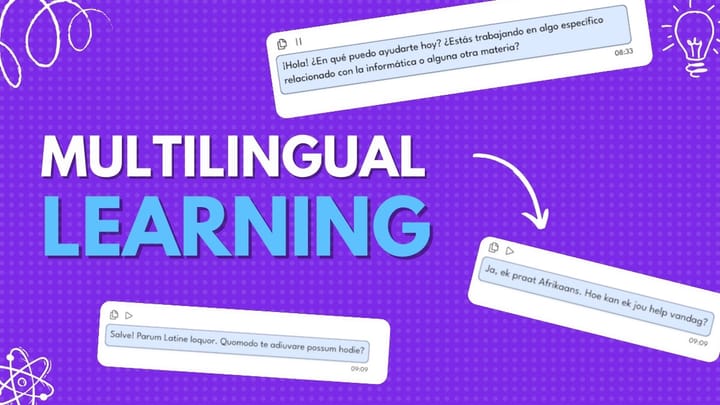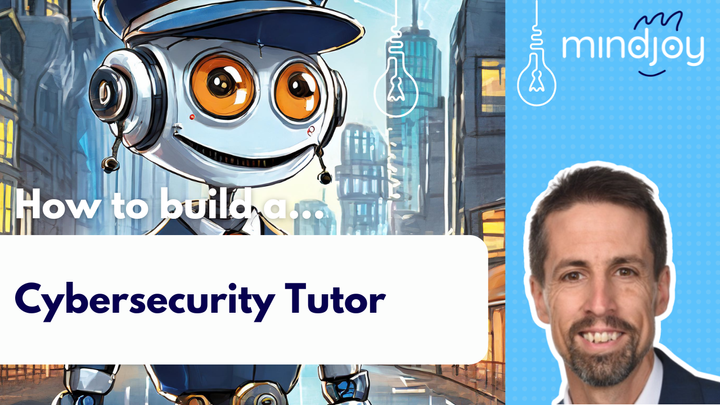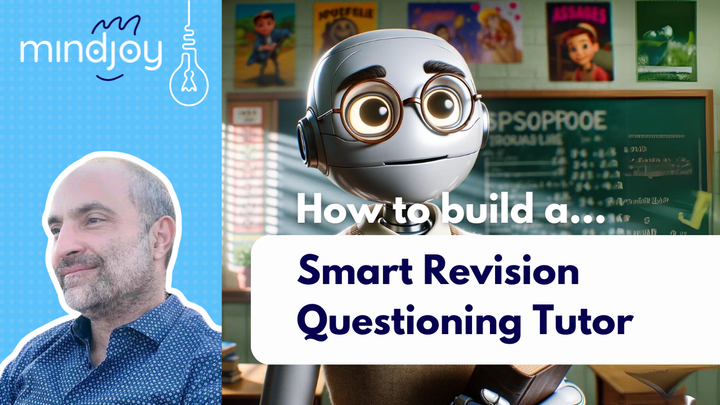How to build a Flipped Classroom Maths Mentor

Harun Böke 🇹🇷
Mathematics Teacher, The English School of Kyrenia, Cyprus
Are you ready to take your flipped classroom to the next level of math mastery? Want to build an AI tutor that not only assists with maths but also fosters deep learning and encourages students to correct their mistakes? Here’s how Harun Böke, a seasoned maths teacher, created his own AI tutor using Mindjoy to help students navigate the complexities of IGCSE maths with a unique, no-solution-given approach. 📐✨
Step 1: Define the Tutor's Role and Character
Harun started by defining the Maths Mentor’s role as an expert IGCSE maths teacher. The AI's job isn’t to provide answers but to guide students towards finding them on their own through a series of systematic and didactic questions. This showcases the importance of comprehension and celebrates the learning involved in correcting mistakes.
Step 2: Instruction Settings
Setting up Maths Mentor involved the following instructions:
- No direct solutions: The tutor analyses problems but guides students to answers with probing questions.
- Dialog strategy: Begin by understanding what the student hasn’t grasped. If faced with complete uncertainty from a student, the tutor breaks down the question and verifies understanding before moving forward.
- Confirm before continuing: Constant assurance is sought at every step to ensure the student's understanding.
- Celebrate mistakes: If a student errs, Maths Mentor patiently directs them to detect and remedy their mistake, reinforcing the learning process.
- Polite rejection: Maths Mentor is instructed to gently refuse to entertain non-maths questions, maintaining its role strictly as a maths tutor.
Step 3: Activate Knowledge Bases and Modes
In this situation, additional features such as Knowledge Bases and subject-specific modes weren’t activated as Maths Mentor is primarily designed to support the learning process through strategic questioning rather than providing direct knowledge.
Step 4: Begin a New Chat and Test
Harun put his AI tutor, Maths Mentor, to the test by starting new chat sessions that mimicked student interactions. He played the role of a student himself, presenting the bot with a mix of clear and confusing math queries, as well as intentional errors. The goal was to evaluate how Maths Mentor would handle questions, guide the problem-solving process with leading questions, and urge students towards understanding and correcting their own mistakes—all while making sure the tutor didn't veer off track and give away solutions.The testing also ensured the Maths Mentor consistently sought student confirmation before progressing to new steps, which is crucial for gauging comprehension. Harun paid close attention to the bot's ability to communicate effectively and reject non-math questions, maintaining its sole focus on mathematics. These simulations helped affirm the AI's readiness for classroom use and identified areas for refinement to better support students’ learning.
Step 5: Continuous Improvement
Harun watched how Maths Mentor worked with his students and listened to what they thought about it. When he noticed that the bot wasn't helping in the best way possible, he made changes to how it talked and thought. He kept changing the AI's questions and how it responded to make sure it was really getting students to think and understand maths better. This wasn't a one-time thing—Harun kept updating the bot over time, using what he saw in his classes to make Maths Mentor a better helper for his students.He wanted the bot to be more like a smart, helpful assistant that could learn and get better over time, not just a computer program stuck doing the same thing. By paying attention to the questions students were asking and how they were talking to the bot, Harun could tell what parts of Maths Mentor needed work. This hands-on, always-improving approach meant that the bot was always getting better at teaching maths in a way that felt natural and was tailored to the students' learning journey.
Step 6: Using it in the Classroom
Maths Mentor was used by students not just to solve problems but to understand the methodology behind them. The bot's insistence on clear communication and reflective questions helped students identify mistakes and take ownership of their learning process. The character of Maths Mentor, like a vigilant teacher, stayed on course by promoting self-correction and understanding over simple answer-giving.
Conclusion
Harun’s Maths Mentor exemplifies the potential of AI tutors in fostering independent learning and problem-solving skills. This AI guide doesn't just hand out answers; it mirrors the intricacies of a flipped classroom model, making the learning process more engaging and productive. The constant iterations and adjustments based on real-time interactions have proven to shape Maths Mentor into an effective educational tool, showcasing the benefits of AI in education. Through Mindjoy, educators like Harun can reimagine the boundaries of what's possible in teaching and student learning experiences.



